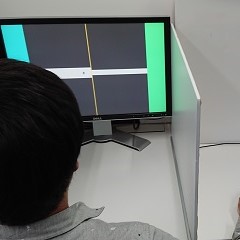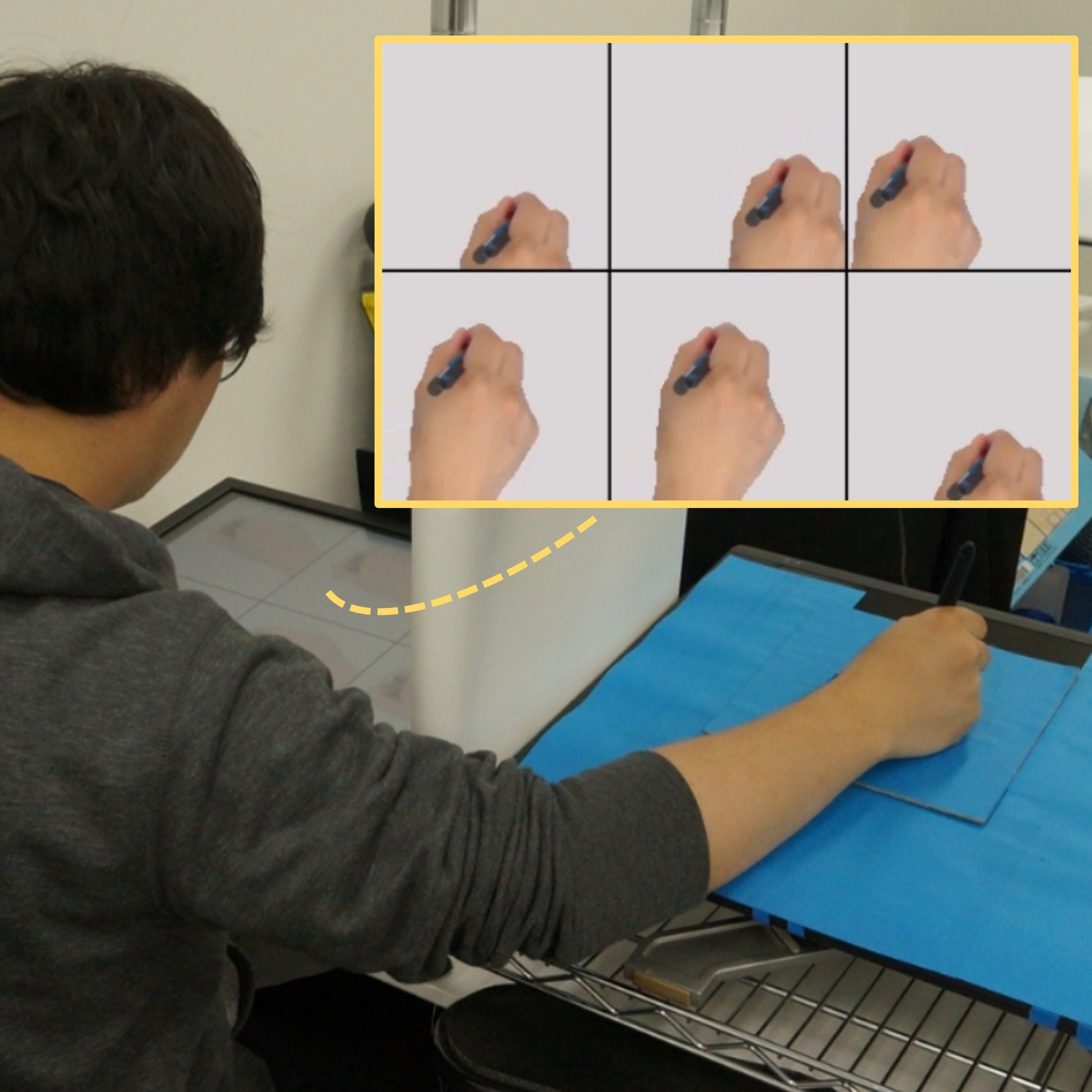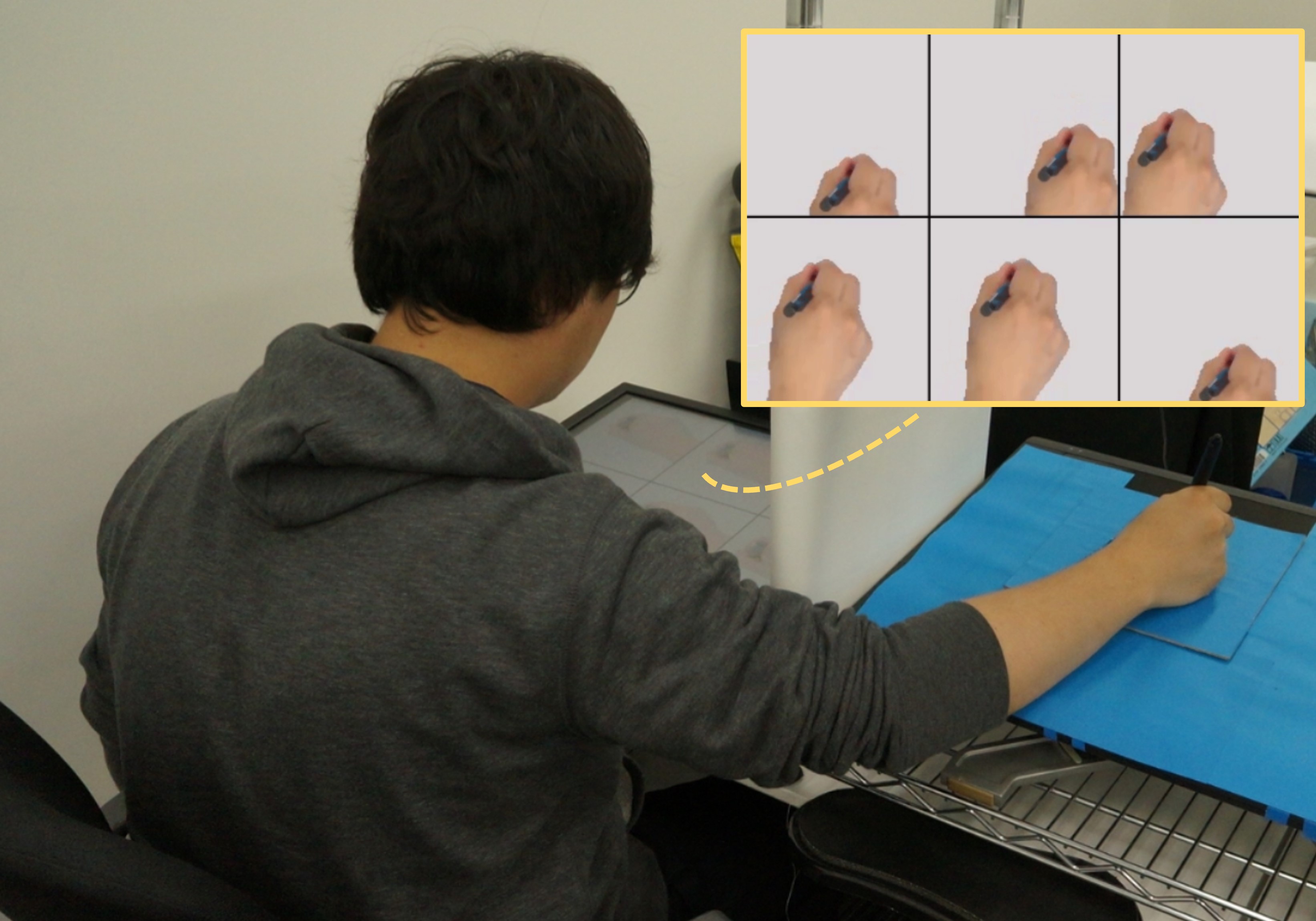齊藤 寛人 / Hiroto Saito Hiroto Saito

Dr. Hiroto Saito is an assistant professor in the Research Center for Advanced Science and Technology at the University of Tokyo, Japan. He received his Ph.D. in Frontier Media Science from Graduate School of Advanced Mathematical Sciences, Meiji University, Japan. His research interests include human motor perception and learning, cognitive science about self-attribution and embodiment, and the design of human-computer interaction.
2019年明治大学大学院先端数理科学研究科博士後期課程修了.
2019年東京大学先端科学技術研究センター特任研究員,2022年東京大学先端科学技術研究センター特任助教,2023年東京大学先端科学技術研究センター助教,現在に至る.
運動学習・運動知覚およびそれらの特性を利用したヒューマンコンピュータインタラクションの設計に関する研究に従事.
博士(理学).
ACM・情報処理学会・VR学会・認知科学会・モーターコントロール研究会各会員.
Works Works


Teaching System of Judgment Basis Using Neural Network on Predicting Kick Direction in Football
Abstract
In sports, it is essential to accurately predict the results of others’ actions based on the movements’ characteristics and respond appropriately to them. Previous studies have proposed systems that predict motions using machine learning and present these results to users. However, it remains unclear whether the judgment basis constructed by machine learning is useful for humans to predict movements accurately. This study developed a Neural Network that predicted the kicking direction of soccer penalty kicks and extracted the basis. Also, we tested whether the extracted basis was useful for participants in their predictions. The results showed that participants perceived the extracted basis as valid, even though they had not used it as a strategy at first.
Publications
本多 拓実, 齊藤 寛人, 脇坂 崇平, 稲見 昌彦. サッカーでのキック方向予測におけるニューラルネットワークを用いた判断根拠の教示システム, 日本バーチャルリアリティ学会論文誌,2022, Vol.27 No.4, pp.393-402. DOI:10.18974/tvrsj.27.4_393
Link
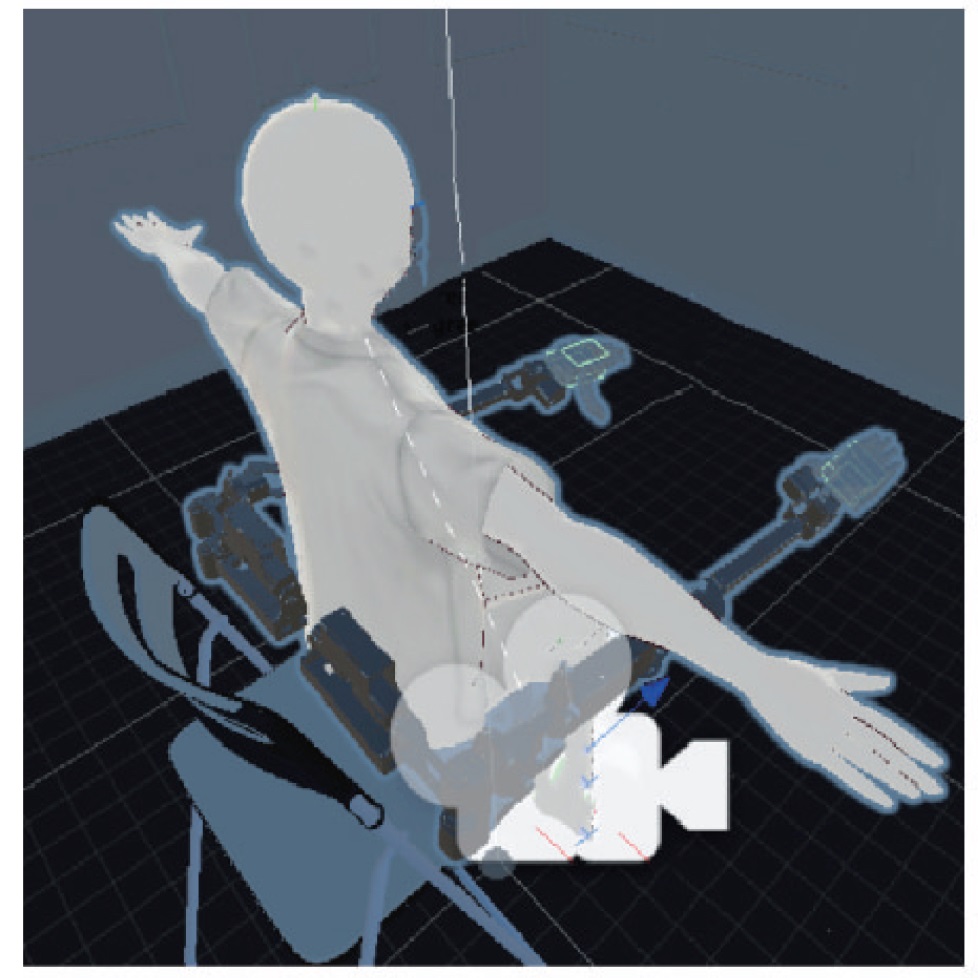
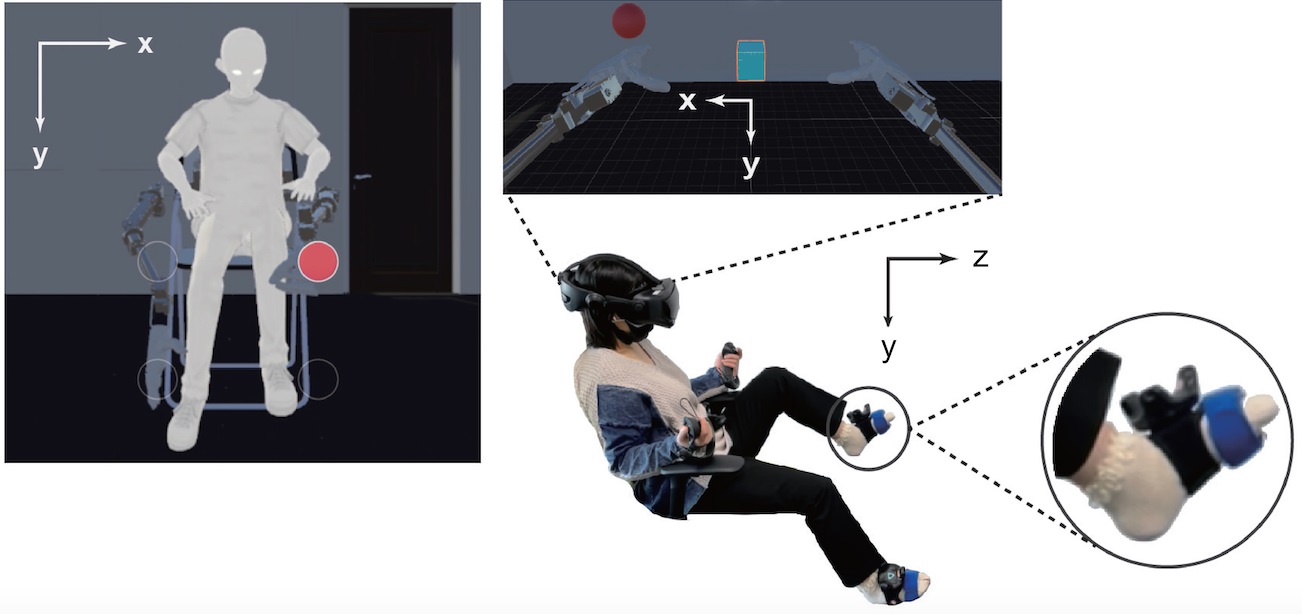
Embodiment of supernumerary robotic limbs in virtual reality
Abstract
The supernumerary robotic limb system expands the motor function of human users by adding extra artificially designed limbs. It is important for us to embody the system as if it is a part of one’s own body and to maintain cognitive transparency in which the cognitive load is suppressed. Embodiment studies have been conducted with an expansion of bodily functions through a “substitution” and “extension”. However, there have been few studies on the “addition” of supernumerary body parts. In this study, we developed a supernumerary robotic limb system that operates in a virtual environment, and then evaluated whether the extra limb can be regarded as a part of one’s own body using a questionnaire and whether the perception of peripersonal space changes with a visuotactile crossmodal congruency task. We found that the participants can embody the extra-limbs after using the supernumerary robotic limb system. We also found a positive correlation between the perceptual change in the crossmodal congruency task and the subjective feeling that the number of one’s arms had increased (supernumerary limb sensation). These results suggest that the addition of an extra body part may cause the participants to feel that they had acquired a new body part that differs from their original body part through a functional expansion.
Publications
Ken Arai, Hiroto Saito, Masaaki Fukuoka, Sachiyo Ueda, Maki Sugimoto, Michiteru Kitazaki, and Masahiko Inami. 2022. Embodiment of supernumerary robotic limbs in virtual reality. In Scientific Reports, 12, Article number: 9769. DOI:10.1038/s41598-022-13981-w
Link
JST ERATO Inami JIZAI body project - project page
Supernumerary virtual robotic arms can feel like part of our body (EurekAlert!)
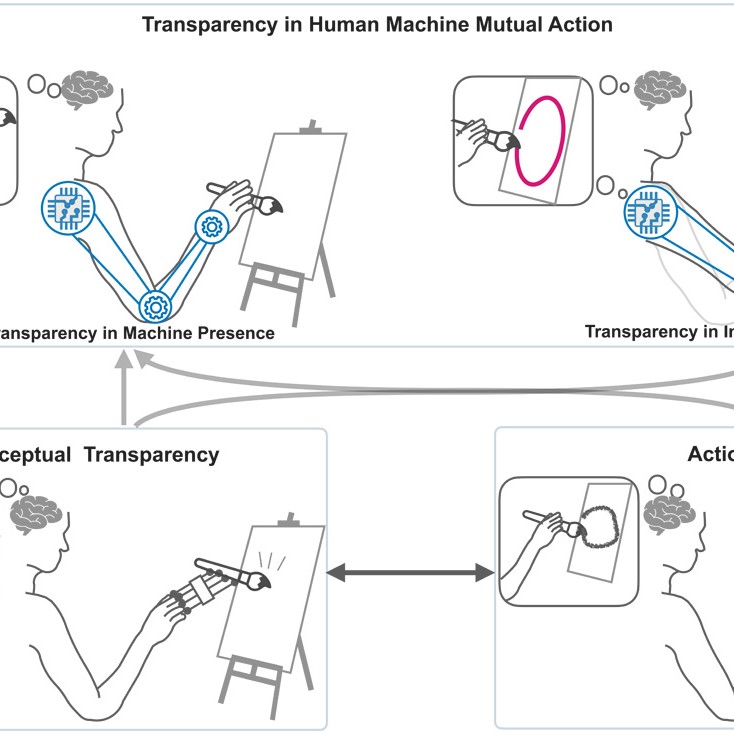

Transparency in Human-Machine Mutual Action
Abstract
Recent advances in human-computer integration (HInt) have focused on the development of human-machine systems, where both human and machine autonomously act upon each other. However, a key challenge in designing such systems is augmenting the user’s physical abilities while maintaining their sense of self-attribution. This challenge is particularly prevalent when both human and machine are capable of acting upon each other, thereby creating a human-machine mutual action (HMMA) system. To address this challenge, we present a design framework that is based on the concept of transparency. We define transparency in HInt as the degree to which users can self-attribute an experience when machines intervene in the users’ action. Using this framework, we form a set of design guidelines and an approach for designing HMMA systems. By using transparency as our focus, we aim to provide a design approach for not only achieving human-machine fusion into a single agent, but also controlling the degrees of fusion at will. This study also highlights the effectiveness of our design approach through an analysis of existing studies that developed HMMA systems. Further development of our design approach is discussed, and future prospects for HInt and HMMA system designs are presented.
Publications
Hiroto Saito, Arata Horie, Azumi Maekawa, Seito Matsubara, Sohei Wakisaka, Zendai Kashino, Shunichi Kasahara, and Masahiko Inami. 2021. Transparency in Human-Machine Mutual Action. In Journal of Robotics and Mechatronics, Vol.33, No.5, pp. 987-1003. DOI:10.20965/jrm.2021.p0987
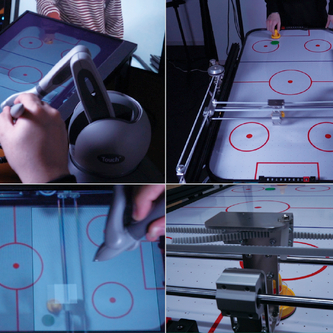
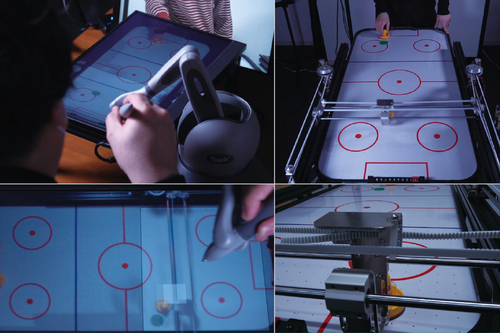
Behind the Game
Abstract
When playing inter-personal sports games remotely, the time lag between user actions and feedback decreases the user’s performance and sense of agency. While computational assistance can improve performance, naive intervention independent of the context also compromises the user’s sense of agency. We propose a context-aware assistance method that retrieves both user performance and sense of agency, and we demonstrate the method using air hockey (a two-dimensional physical game) as a testbed. Our system includes a 2D plotter-like machine that controls the striker on half of the table surface, and a web application interface that enables manipulation of the striker from a remote location. Using our system, a remote player can play against a physical opponent from anywhere through a web browser. We designed the striker control assistance based on the context by computationally predicting the puck’s trajectory using a real-time captured video image. With this assistance, the remote player exhibits an improved performance without compromising their sense of agency, and both players can experience the excitement of the game.
Publications
Maekawa, Azumi, Hiroto Saito, Narin Okazaki, Shunichi Kasahara, and Masahiko Inami. 2021. Behind The Game: Implicit Spatio-Temporal Intervention in Inter-Personal Remote Physical Interactions on Playing Air Hockey. In ACM SIGGRAPH 2021 Emerging Technologies (SIGGRAPH ’21). Association for Computing Machinery, New York, NY, USA, Article 9, 1–4. DOI:10.1145/3450550.3465348
Link
JST ERATO Inami JIZAI body project - project page
SIGGRAPH 2021 EMERGING TECHNOLOGIES DEMONSTRATE PANDEMIC PERSEVERANCE
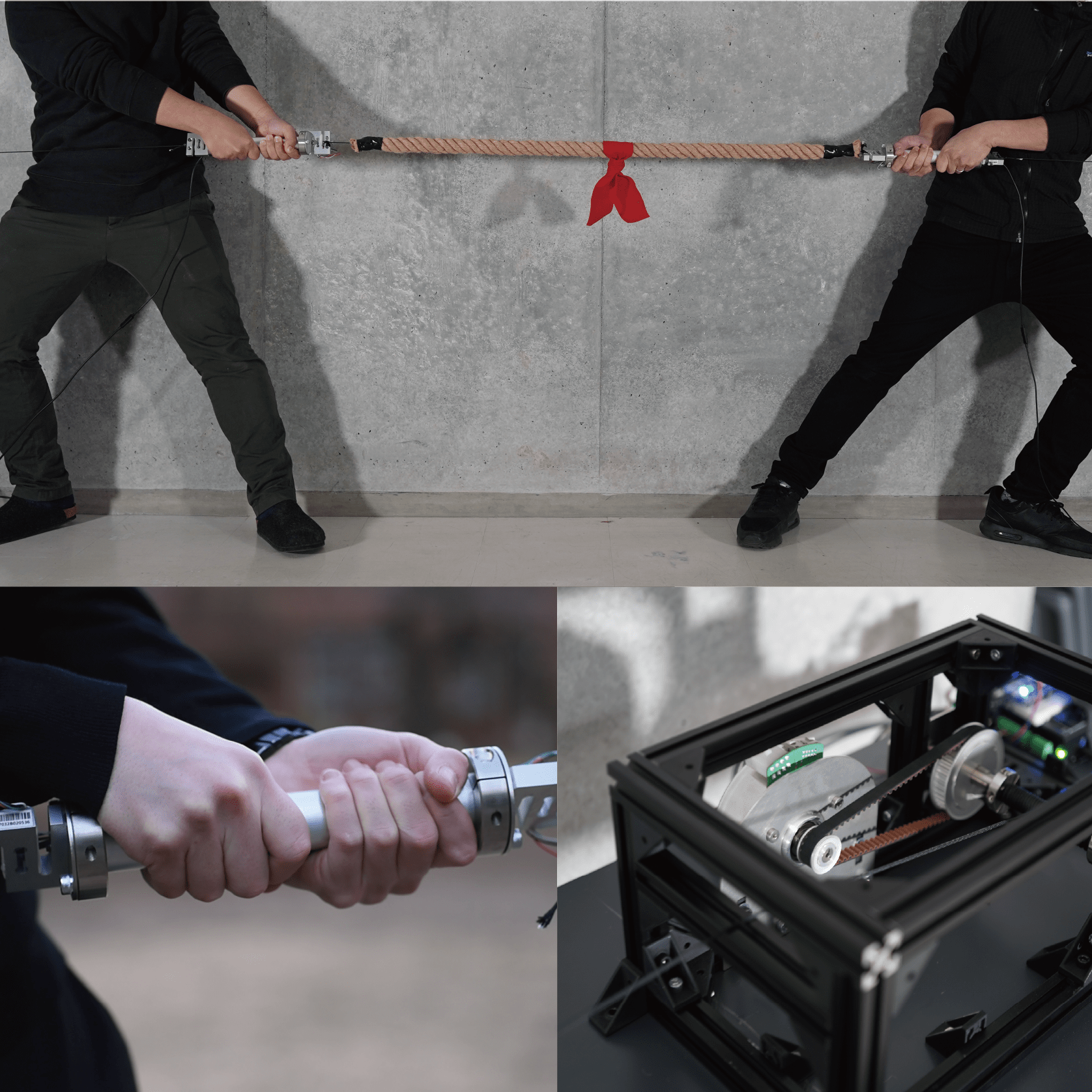
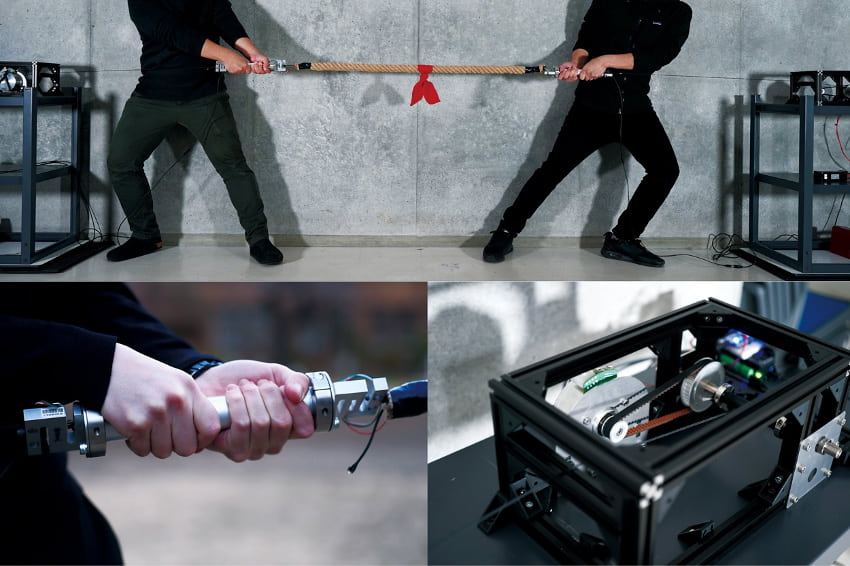
The Tight Game
Abstract
Physical assistance can alleviate individual differences of abilities between players to create well-balanced inter-personal physical games. However, ‘explicit’ intervention can ruin the players’ sense of agency, and cause a loss of engagements in both the player and audience. We propose an implicit physical intervention system ”The Tight Game” for ‘Tug of War’ a one-dimensional physical game. Our system includes four force sensors connected to the rope and two hidden high torque motors, which provide realtime physical assistance. We designed the implicit physical assistance by leveraging human recognition of the external forces during physical actions. In The Tight Game, a pair of players engage in a tug of war, and believe that they are participating in a well balanced, tight game. In reality, however, an external system or person mediates the game, performing physical interventions without the players noticing.
Publications
Azumi Maekawa, Shunichi Kasahara, Hiroto Saito, Daisuke Uriu, Gowrishankar Ganesh, and Masahiko Inami. 2020. The Tight Game: Implicit Force Intervention in Inter-personal Physical Interactions on Playing Tug of War. In ACM SIGGRAPH 2020 Emerging Technologies (SIGGRAPH ’20). Association for Computing Machinery, New York, NY, USA, Article 10, 1–2. DOI:10.1145/3388534.3407301
Link
JST ERATO Inami JIZAI body project - project page
SIGGRAPH 2020 TO SPOTLIGHT 20 TRANSFORMATIVE, EMERGING TECHNOLOGIES
